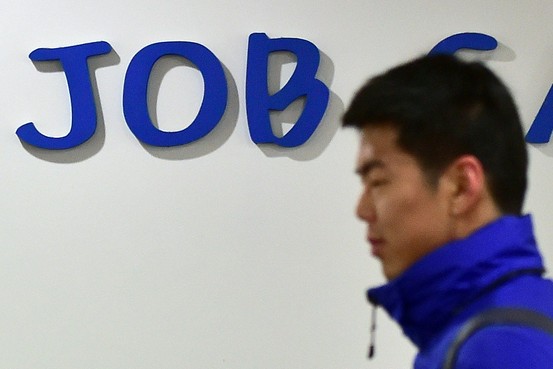by JAMES S. KIM | @james_s_kim
editor@charactermedia.com
Two-thirds of South Koreans aged 25-34 boast college degrees, the highest proportion among the 34 countries in the Organization for Economic Cooperation and Development (OECD), where the average is at 40 percent. But as in the case of America’s “over-educated baristas,” getting a degree doesn’t always guarantee the job they’re looking for.
According to recent numbers from Statistics Korea, the number of unemployed South Koreans in their 20s and 30s who have no previous job experience is the highest in more than 12 years. This does not include currently jobless individuals who have had previous experience. Overall unemployment for those between 15-29 also hit a 14-year high last year.
Permanent Jobs vs. Temporary Positions
South Korea’s labor market is divided between a limited number of permanent jobs, which have high security and benefits, and temporary positions that end after two years. The outlook isn’t good, though: In 2012, 24 percent of South Korean workers held temporary positions, double the OECD average. The Korea Employers Federation said 377 companies with more than 100 employees plan to reduce hiring by 3.6 percent this year, compared to the last, and graduates faced 33 to 1 odds of landing a job after conducting a survey of 377 companies nationwide.
Along with the alleged abuses and exploitation of interns and temporary workers, many graduates see themselves overqualified for these positions, and an increasing number of students are choosing to stay in school longer and retain their students status. A survey of 33 universities last year found that more than 15,000 students delayed graduation. That means young men have even less time to be in the labor force, as they are required to serve up to two years in the military.
Gender Wage Gap
Female college grads have it particularly tough. There are some encouraging signs, as more women are graduating with degrees and women in their 20s are outpacing male counterparts in the job market at the highest-ever recorded rate since surpassing men in 2012.
But only 1 in 5 graduates in science, technology, engineering or mathematics are women. In 2013, South Korea ranked dead last among OECD nations in employment of female grads at 60.1 percent. The overall workforce participation rate for women is only at 55.2 percent, compared to the U.S.’s 67.2 rate and the OECD average of 62.6 percent. South Korea also ranks last in the OECD in wage disparity, with a 39 percent gap in median wages between men and women.
Résumé Photos and Application Process
It doesn’t help either men or women that résumé requirements can also be incredibly strict. SBS News recently broadcasted a report on how many companies require applicants to include their photo, height, weight and even family backgrounds. Photos sometimes require hair and makeup to be done professionally, while the other categories scream potential discrimination based on age, gender and appearance.
Government efforts to make discriminatory requirements on résumés have reportedly tapered off, and companies largely ignored government recommendations to do so.
Protest Against Flexible Labor Market
South Korea’s government policies on how to remedy its youth unemployment rates, for the most part, missed their mark or haven’t been popular among that particular crowd. Last November, labor groups and students blasted proposed measures to make the labor market “more flexible” by easing rules and lay-offs and pay, saying that temporary workers were not nearly as protected as permanent workers.
Even though the South Korean government is pumping money into the rapidly growing startup industry, not everyone graduates with a degree in software engineering.
Cost of Higher Education
Perhaps the most daunting task is displacing the well-ingrained prestige behind acquiring a degree. The relentless focus on exams is well-known, and South Koreans spend an average of $7,652 per student across all grade levels, including college. While that’s lower than what Americans and other OECD nations spend on average, the amount represents 7.6 percent of South Korea’s GDP spent on education–the third-highest amount of GDP spent on education in the OECD behind only Iceland and Denmark.
___
Feature image via Wall Street Journal/Agence France-Press/Getty Images







